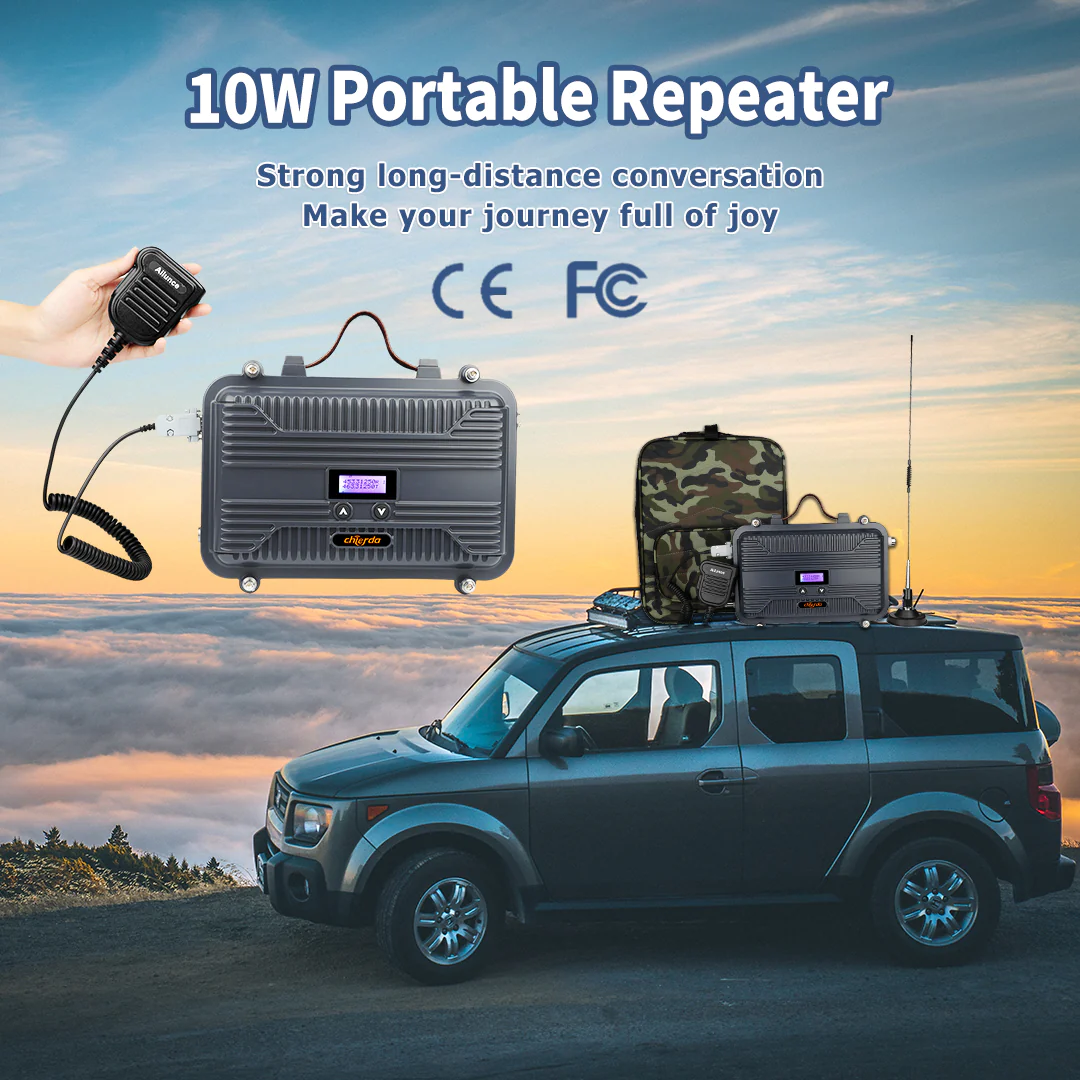
The radio has evolved into many different forms since its inception, each serving a different function. And a radio repeater is known as an upgrade device of communication and one of the most popular types of repeaters.
If you’re an amateur and have no ideas about the radio world, tons of definitions and information might make your mind explode.
But don’t worry because we are here with this comprehensive post to help you understand “what is a radio repeater?” So please scroll down to the bottom of the page and read through to the end. All you need to know about a radio repeater will be revealed!
Radio Repeater Definition
A radio repeater is an electronic device that combines a radio receiver and a radio transmitter to receive a signal and retransmit it over a greater distance, allowing two-way radio communications to go further.
A repeater at a high elevation can connect two mobile stations that would otherwise be out of each other’s line-of-sight propagation range. Repeaters are used in professional, commercial, and government mobile radio systems and amateur radio.
All About A Radio Repeater
As mentioned above, a radio repeater helps extend the range of a portable or mobile radio system. A radio repeater (or a mobile radio repeater) receives a radio signal and retransmits it at a higher power level, allowing it to travel longer distances. This lets radio users communicate when obstacles or distance are an issue.
The frequency range of a repeaters radio available for purchase is typically 150MHz to 900MHz. Radio waves in these frequencies, unlike AM radio waves, travel in straight lines and, in general, cannot go beyond the horizon or behind solid objects.
However, there are still exceptions to the general rules. For example, although these frequencies travel along “line-of-sight” pathways, radio signals may pass through various non-metallic objects and be picked up through walls or other obstacles.
Even though we can’t see between transmitter and receiver antennas, the radios consider this line-of-sight. Also, because radio waves can be reflected or bounced off objects, the straight path between radios isn’t necessarily that straight.
How Does A Radio Repeater Work?
If a radio repeater wants to work, it’ll need a radio station. A radio station consists of a receiver tuned to one frequency as the “input” and a transmitter tuned to a different frequency as the “output,” both of which are connected via a controller device.
When a receiver receives a signal, the controller activates the transmitter, which then retransmits the signal.
This means that if you use two-way radios with a radio repeater service, they will be configured to receive on the repeater’s input frequency and transmit on the repeater’s output frequency.
There are two radio frequencies that the radio repeater system needs to use. While mobile stations use radio repeaters, the repeater station’s frequency must differ from the transmission frequency.
A repeater is generally placed on top of a tall structure or a mountain, and it is fitted with a powerful antenna system that allows it to collect weak signals and transmit across a large area. Thus, a repeater may expand a low-power handheld radio’s effective communication range to dozens, if not hundreds, of kilometers.
Repeaters are occasionally connected to increase the transmission range. And the work may be accomplished via cables, a radio link, a phone connection, or even digital audio technology through the Internet.
Additionally, frequency-selective filters are necessary to prevent the receiver from being overwhelmed by the broadcast signal. The repeater must transmit simultaneously as the signal is received and may even utilize the same antenna for both sending and receiving.
Some repeaters employ two separate frequency bands for input and output isolation or convenience.
What Is The Function Of A Radio Repeater
Commercial enterprises that operate across vast or congested regions, emergency services, public transportation, and amateur radio hobbyists employ radio repeater networks.
In addition, they are often utilized in big locations, such as a warehouse or hotel, when the structure of the building makes it difficult to cover. Several specific applications for radio repeaters are:
- Radio repeaters increase coverage in systems that use frequencies that propagate in a line-of-sight manner. Without them, the range of these systems is limited due to the curvature of the Earth and the blocking impact of terrain or tall structures.
- Radio repeaters may also translate one set of radio frequencies to another, allowing two distinct public service organizations to communicate with one another (say, police and fire services of a city or neighboring police departments).
- They may also have connections to the public switched telephone network or a satellite network (BGAN, INMARSAT, MSAT) as a backup route from the source to the destination.



